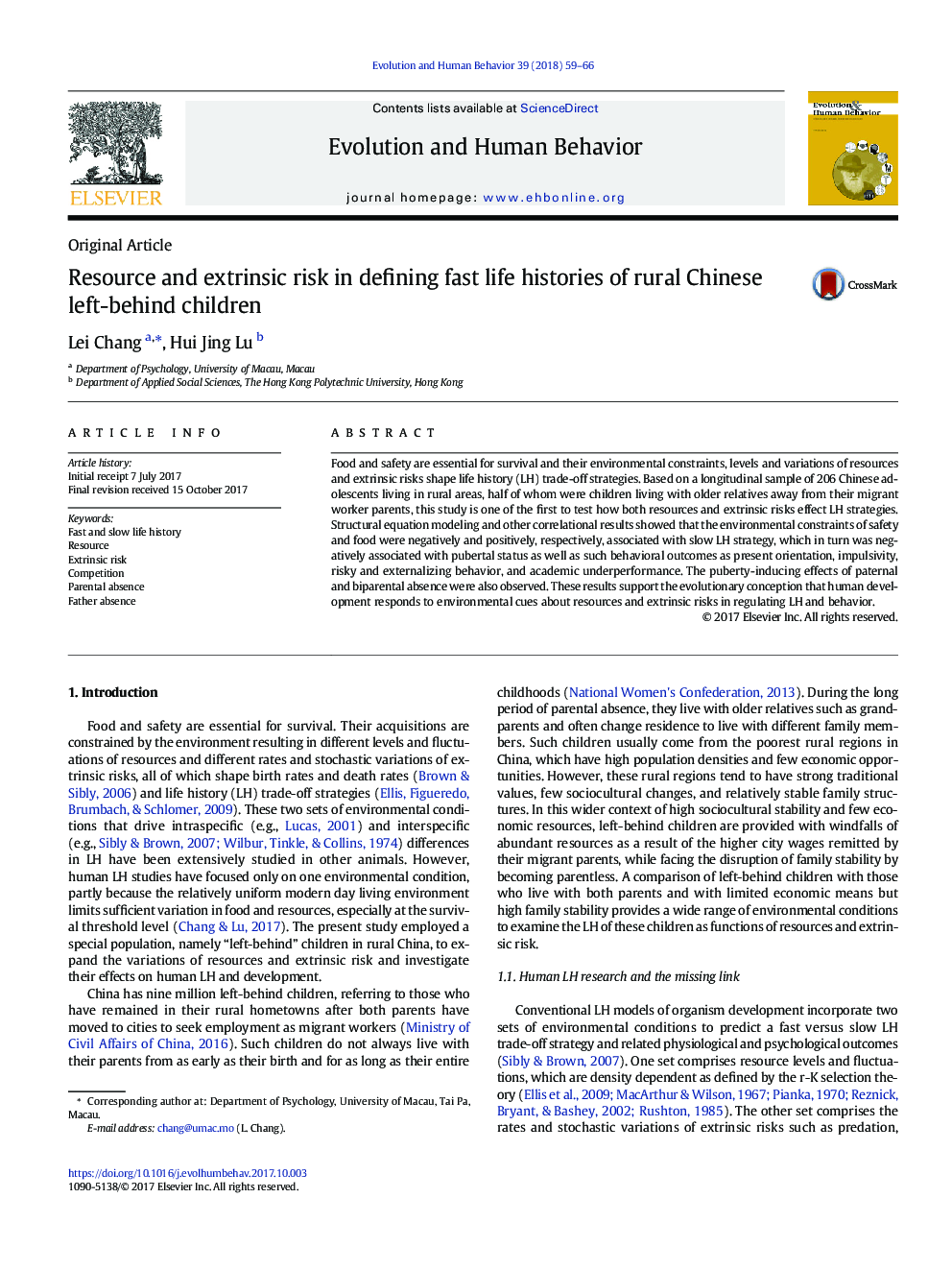| Article ID | Journal | Published Year | Pages | File Type |
|---|---|---|---|---|
| 7316373 | Evolution and Human Behavior | 2018 | 8 Pages |
Abstract
Food and safety are essential for survival and their environmental constraints, levels and variations of resources and extrinsic risks shape life history (LH) trade-off strategies. Based on a longitudinal sample of 206 Chinese adolescents living in rural areas, half of whom were children living with older relatives away from their migrant worker parents, this study is one of the first to test how both resources and extrinsic risks effect LH strategies. Structural equation modeling and other correlational results showed that the environmental constraints of safety and food were negatively and positively, respectively, associated with slow LH strategy, which in turn was negatively associated with pubertal status as well as such behavioral outcomes as present orientation, impulsivity, risky and externalizing behavior, and academic underperformance. The puberty-inducing effects of paternal and biparental absence were also observed. These results support the evolutionary conception that human development responds to environmental cues about resources and extrinsic risks in regulating LH and behavior.
Related Topics
Life Sciences
Agricultural and Biological Sciences
Ecology, Evolution, Behavior and Systematics
Authors
Lei Chang, Hui Jing Lu,
